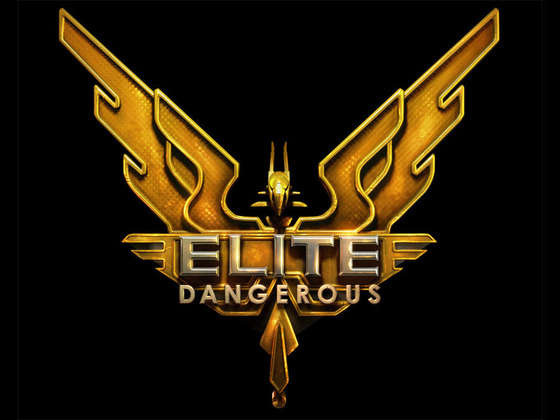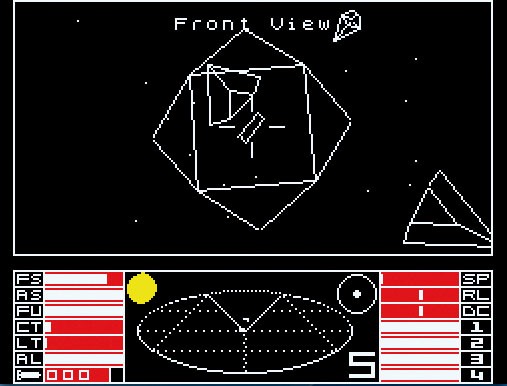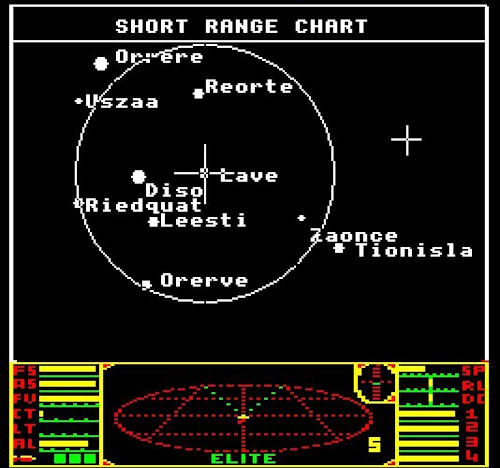Right on, commander! Elite reborn on Kickstarter

Planet Lave on the outskirts of the galaxy, coined types of Cobra MK III, 100 credits, and then - spin, as you like. That's how Elite began - the legendary game of the eighties. The original version of the game for the computer BBC Micro was released in 1984. In our country, Spectrum Elite is the most widely used - 40 kilobytes, weary languishingly from the tape for several minutes, and inside - an infinite variety of galaxies and star systems, rich and poor, highly developed and backward, calm and deadly, trap in the hyperspace of targoids and legend about the impossible planet Raxxla ...
The company Frontier Developments, owned by David Braben - one of the creators of the original game, finally seriously undertook the revival of the game at the present level. The two official sequels, Frontier: Elite 2 and Frontier: First Encounters, released in 93 and 95 years of the last century, were not very successful, and the development of Elite 4 was postponed.
But now, it seems, the matter has moved from a dead end. Frontier Developments has launched a Kickstarter campaign . The name of the new "Elite" - Elite: dangerous. The target is 1,250,000 pounds sterling, the release of the game is scheduled for March 2014. On the very first day of the campaign, more than 150,000 thousand were collected.
')
In addition to the traditional open story, commerce, travel and battles in the game will be a multiplayer mode - any of the ships that meet in space, can be with a living pilot.
The game will use the same approach to the generation of the environment as in the original "Elite" - star systems will be created algorithmically based on pseudo-random sequences. One of the Kickstarter campaign rewards is the inclusion of the name of the backer in the base for generating names and names, and if you pay more, you can stake out the name of the planet or the star system as a whole.
 In the mid-80s, this game made a real revolution. It was one of the first fully 3D vector graphics games. She did not have a definite goal - each player could independently choose a lesson according to taste - trade, piracy, exploration of new worlds or the war with targoids in outer space. Instead of the instruction to the cassette with the game, a fantastic story “The Dark Wheel” was added, defining the atmosphere of the game and giving hints of its capabilities and tactics.
In the mid-80s, this game made a real revolution. It was one of the first fully 3D vector graphics games. She did not have a definite goal - each player could independently choose a lesson according to taste - trade, piracy, exploration of new worlds or the war with targoids in outer space. Instead of the instruction to the cassette with the game, a fantastic story “The Dark Wheel” was added, defining the atmosphere of the game and giving hints of its capabilities and tactics.In the USSR, almost no one has ever seen branded tapes with the original story - they copied the game from friends, mastered the complex ship control system and interstellar trade independently or according to articles in magazines devoted to the ZX Spectrum. And the numbers of the ZX-revue, in which they published the translation of the Dark Wheel, were read out and locked in holes.
 It is worthwhile to dwell on the system of generation of galaxies and stellar systems. Of the 48 kilobytes of Spectrum memory, almost 7 occupied the screen memory, a few more hundred bytes — the system variables and the stack. In the remaining 40 kilobytes, the creators of the game managed to shove all the logic, graphics and game data. The state file saved on the tape weighed only 102 bytes. The location, economic, political and technological level of star systems and even their names were generated on the basis of 6 bytes containing the “seed” (seed) for a pseudo-random algorithm. The galaxies were combined into systems of eight galaxies, in which each subsequent one was obtained by cyclically shifting each byte of the “seed”. By changing these bytes manually, one could get an unimaginable number of galactic systems with very different properties.
It is worthwhile to dwell on the system of generation of galaxies and stellar systems. Of the 48 kilobytes of Spectrum memory, almost 7 occupied the screen memory, a few more hundred bytes — the system variables and the stack. In the remaining 40 kilobytes, the creators of the game managed to shove all the logic, graphics and game data. The state file saved on the tape weighed only 102 bytes. The location, economic, political and technological level of star systems and even their names were generated on the basis of 6 bytes containing the “seed” (seed) for a pseudo-random algorithm. The galaxies were combined into systems of eight galaxies, in which each subsequent one was obtained by cyclically shifting each byte of the “seed”. By changing these bytes manually, one could get an unimaginable number of galactic systems with very different properties.Source: https://habr.com/ru/post/157581/
All Articles